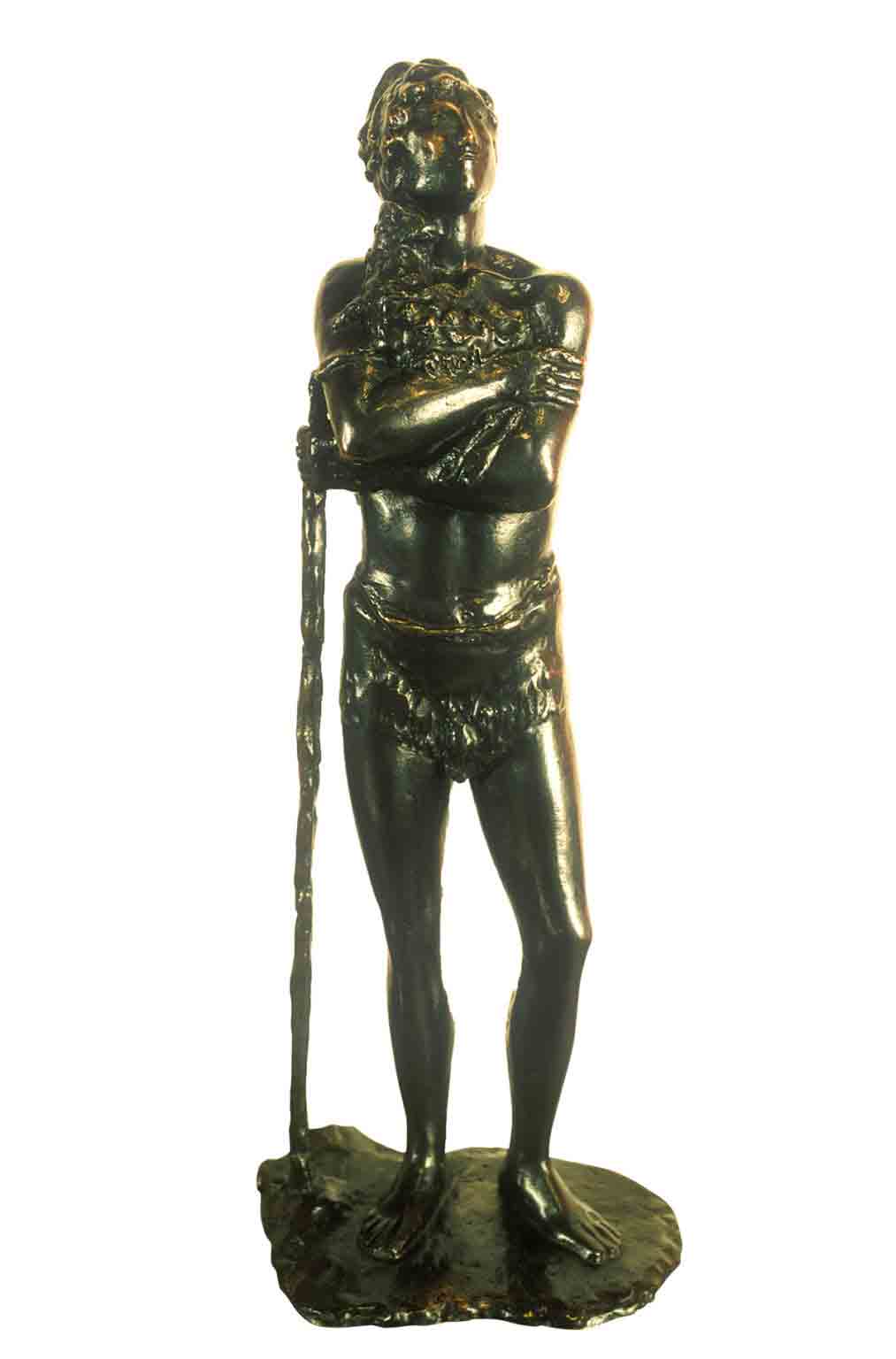Work: St John the Baptist
Original sculpture

Original
- Author
- Arturo Martini
- Date
- 1935 (original in plaster) - 1987 (bronze-casted version)
- Period
- 20th Century
- Dimensions
- 47,5 cm high, 17 cm wide, 11 cm deep
- Technique
- casting, patination
- Material
- bronze
- Space
- 20th Century and Contemporary
Photo: Maurizio Bolognini. Museo Tattile Statale Omero Archive.
Description
“Nowadays sculptors do nothing but trying some variations on themes that the Ancient masters have already checkmated one by one”, Arturo Martini.
“St John the Baptist” is a small bronze statue, approximately 50 centimetres high, kept at the Museo Omero. It is a casting from a plaster from 1935.
The statue represents a young shepherd, covered only by a loincloth, who is standing with his legs slightly open; in his arms he holds a little lamb close to his chest, and with his left hand he holds a stick which touches the ground.
The verticality conveyed by the lines of his legs and the stick is interrupted at his chest by the animal’s irregular mass which is the animal. The young man’s legs and arms are tapered, his facial features are stylised and barely perceivable; his wavy hair blends on his neck with the lamb’s wool. His face is looking up, in an almost aesthetic way, like it is often the case in other characters that the artist moulds in terracotta.
The bronze is perfectly smooth; the simple and delicate style of the sculpture reminds, on the one hand, of a certain production of small bronze statues from the Renaissance, and, on the other, of that pathetic and Arcadian flair from the 18th century. Arturo Martini tackles more than once the beloved subject of the Shepherd, which he first represented in 1923 in a work called “Sacrificio” (Sacrifice) or “Pastor fido” (“Trustworthy shepherd). It is only recently that this small bronze statue has been named “St John The Baptist”, even though it is an illegitimate title as Martini himself used to call it Shepherd. In this work, like in others, the artist can bring together modernity and antiquity, working with materials which are typical of the sculpting tradition, such as terracotta, wood, stone, bronze, and creating both large- and small-sized works.
